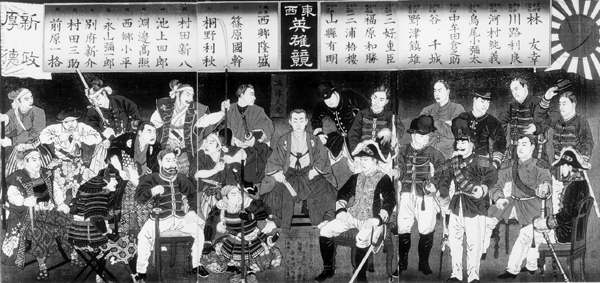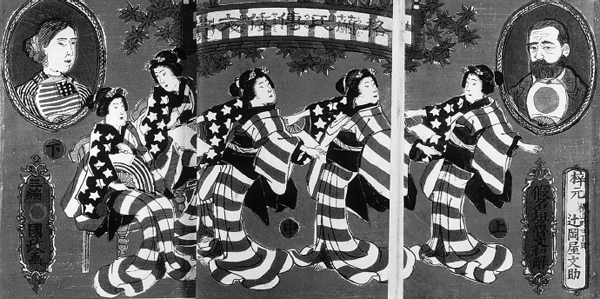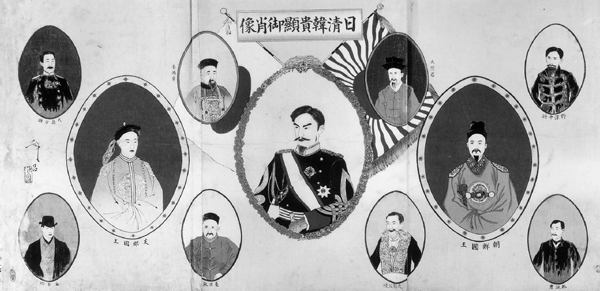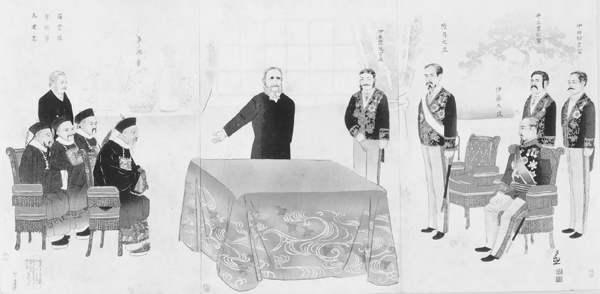Emperor of Japan: Meiji and His World, 1852’1912 (75 page)
Read Emperor of Japan: Meiji and His World, 1852’1912 Online
Authors: Donald Keene
Tags: #History/Asia/General


The opposing army leaders during the Satsuma Rebellion. Print by Takeuchi Eiky
ū
(1877).The government forces (in Western-style uniforms) and the Satsuma officers (in various costumes) flank Shimazu Hisamitsu.
Courtesy the Kanagawa Museum

The
seppuku
(ritual disembowelment) of Saig
ō
Takamori.Print by Taiso Yoshitoshi (1877). Saig
ō
in fact died at Shiroyama, not on the sea, but the artist had a lively imagination.
Courtesy the Kanagawa Museum

Rokumeikan, the building that symbolized Japanese efforts to achieve modernization.
Photograph courtesy Dallas Finn


The visit to Japan of General and Mrs. Ulysses S. Grant, depicted in insets to the upper right and left, celebrated by geisha dancing in kimonos that pay tribute to the Stars and Stripes.
Courtesy the Mary and Jackson Burke Collection

Issuance of the constitution in the state chamber of the new palace, March 14, 1889. Print by Adachi Gink
ō
.
Courtesy The Metropolitan Museum of Art, Gift of Lincoln Kirstein, 1959

Empress Haruko teaching girls at the Peeresses’ School to sing the song she composed. Print by Toyohara Kunichika (1887). The empress wore Western dress from this time on.
Courtesy the Kanagawa Museum


The arrival of Czarevitch Nicholas at Shimbashi Station, where he is met by Emperor Meiji. Print by Kunimasa V (1891). This is a wholly imagined scene, since the future Nicholas II never visited Tokyo.
Courtesy the Kanagawa Museum

The monarchs who ruled Japan, Korea, and China with their chief advisers. Print by Shunsai Toshimasa (1894). Meiji is in the center; King Kojong, to the right; and Kuang-hsü, “the king of China,” to the left.
Courtesy the Kanagawa Museum

The visit of Empress Haruko to the hospital in Hiroshima where men wounded in the Sino-Japanese War are being treated. Print by Kobayashi Kiyochika (1895). The bandaged patient at the left crouches in awe, and a nurse nearby kneels.
Courtesy the Kanagawa Museum

Negotiations in Shimonoseki to end the Sino-Japanese War. Print by Kobayashi Kiyochika (1895). To the right, the Japanese delegation is headed by It
ō
Hirobumi. To the left, the Chinese delegation is led by Li Hung-chang.Two foreign advisers of the Chinese are also present.
Courtesy the Kanagawa Museum